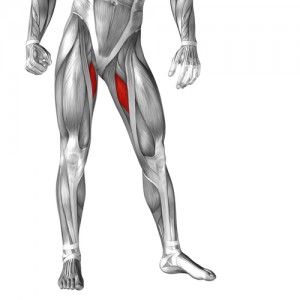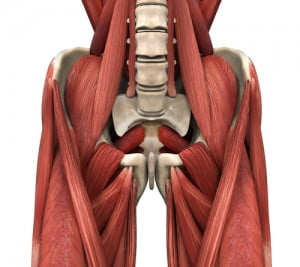How To Relieve Groin Pain & Strain- Best Treatments
We’re talking about groin muscles today, specifically the adductor muscles in our inner thighs. These include the adductor longus, brevis, magnus, and the gracilis muscle. These muscles help us move, walk, and run. When they’re unhappy, you might feel pain in the groin area and even in the knee.
It’s important to know how these muscles work and why they’re important, especially when it comes to moving around comfortably. If you’ve ever had issues with these muscles, you know it can be a real pain, literally! Whether you’re an athlete, a fitness enthusiast, or someone just looking to move without discomfort, understanding these muscles and how to take care of them is key. So, let’s dive in and explore some best practices and treatments to keep our legs happy and healthy!
Adductor Longus & Adductor Brevis
The Adductor Longus and Adductor Brevis are crucial muscles located in our inner thigh, playing a significant role in our daily movements. The Adductor Longus, often the usual suspect in cases of groin pain, is particularly active during activities like walking or running, kicking into action at the time of toe-off. It’s like the muscle’s way of helping us propel forward! If you’ve ever felt pain in this area after a run or some intense exercise, it might be due to tightness in these muscles, especially if there are trigger points, causing discomfort both towards the pelvis and the knee joint, and sometimes, even extending down the lower leg.
This pain can be particularly noticeable with sudden twists of the hip, a common scenario in various sports and physical activities. Apart from muscle discomfort, inner thigh ligament pain can also be a concern for many individuals. Acute adductor longus injuries require immediate attention and can be a result of sudden, forceful movements. Understanding the nuances of these muscles and how they operate can be key in managing and preventing discomfort in these areas.
Adductor Magnus
The adductor magnus muscle, a substantial component of the adductor muscle group, is situated in the medial aspect of the thigh. It’s the muscle above the groin. It’s a long muscle, playing a crucial role in hip adduction and medial rotation of the leg. When discussing trigger points in this muscle, they are often perceived as deeply located, giving a sensation as if originating within the pelvis. The resultant pain can be quite intense, akin to a firecracker shooting up into the pelvis, especially noticeable during activities such as walking, jogging, ascending stairs, and horse riding, where the muscle activates at the time of heel strike.
This muscle’s discomfort is often described as being “deep inside” the pelvis and can be particularly prominent during specific activities and positions, even causing difficulties in positioning the leg while sleeping. For alleviating such discomfort, laying on one’s side with a pillow between the legs is often recommended. The adductor magnus receives its arterial supply from a branch of the deep femoral artery, ensuring optimal blood flow to meet the muscle’s
metabolic demands.
While discussing this muscle, it’s essential to consider its role in various movements of the leg and its association with other muscles like the sartorius and pectineus muscles. It’s crucial to be mindful of any medical conditions or neurological conditions affecting this muscle, as they can significantly impact the working of basic functionalities of the leg. Any strain or impairment in this muscle, such as a gracilis muscle strain, necessitates careful attention and appropriate management to prevent complications like ACL injury and to maintain the integrity of the medial thigh muscle structures. Balancing between maintaining privacy and acquiring necessary personal information is crucial for medical professionals and personal trainers dealing with such conditions, ensuring optimal care and recovery.
Gracilis
The gracilis muscle, a slender and thin muscle, is prominently located in the medial compartment of the thigh, serving as the most superficial muscle among the hip adductors. Originating from the inferior ramus of the pubis and the

This muscle is pivotal for thigh adduction and knee flexion, playing an important role in activities such as horse riding. It receives its blood supply primarily from the medial circumflex femoral artery and the obturator artery, branches of the deep femoral artery, ensuring optimal vascular supply. The anterior branch of the obturator nerve, part of the lumbar plexus, provides the necessary neurological impulses for its function.
Experiencing a hot, stinging pain along the medial side of the thigh could be indicative of trigger points in the gracilis muscle, often resulting from activities that involve sudden movements, such as jumping for a volleyball spike. Strain in this muscle, especially near the pubic bone, can cause significant discomfort, commonly observed in sports like ice hockey and soccer. People often report experiencing gracilis muscle cramps at night, which can be indicative of overuse or strain during the day.
The gracilis tendon, a rounded structure, is crucial for the muscle’s function in leg movements and is sometimes utilized in reconstructive surgery for facial reanimation in cases of facial paralysis, using a myocutaneous flap from this muscle. Medical professionals and physical therapists emphasize the importance of maintaining the health and strength of the gracilis due to its significant role in lower extremity movements and its proximity to vital blood vessels. Any impairment in the gracilis muscle due to neurological or vascular conditions necessitates immediate medical attention to ensure the proper working of the basic functionalities of the muscle in leg movements and stability.
What are the causes of groin and gracilis muscle pain?
One of the most common causes of groin pain is a sudden overload in the muscle like slipping on the ice and resisting spreading the legs while trying to get balance. Arthritis in the hip joint can also activate these trigger points as well as horseback riding, skiing, or long bike ride. You will normally remember one event that happened to cause the tight muscle in the groin area. The trpts and adductor soreness will persist if you do things like run up and down hills or sit for a long time in a car or chair. Groin pulls are a common injury among professional athletes.
Other contributing causes:
Groin Pain. When the muscle in the groin region is stretched or ripped, it can cause sharp pain. Sudden alterations in direction can contribute to a stress-induced pulled groin muscle. The muscle can likewise be put under strain while making a kicking movement.
Sports Hernia. Engaging in a physical activity that involves unexpected shifts in direction can result in the development of a sports hernia otherwise known as an inguinal hernia. This medical condition comprises damage or ruptures to muscle fibers, tendons, and ligaments in the vicinity of the groin.
Pinched Nerve. If a nerve is compressed in your lower back, it has the ability to generate discomfort along the interior of your leg. Moreover, it is feasible to encounter a compressed nerve in your groin area.
Pes anserine bursitis. Bursitis may occur if there is inflammation in the pes anserine bursa caused by excessive usage or strain. The bursal sac is situated between the gracilis, sartorius, and semitendinosus muscles.
Muscle spasms. Muscle spasms are another factor that can lead to pain in the gracilis. These spasms often occur due to excessive use of the muscle or as a result of dehydration and muscular exhaustion.
Neurological issues. There are certain neurological disorders that have the potential to trigger spasms in the gracilis muscle, which may result in discomfort. Moreover, the condition of multiple sclerosis (MS) is often associated with rigidity in the muscles, particularly in the pelvic area, as cited by the Multiple Sclerosis Association of America.
Osteitis pubis. Osteitis pubis, also recognized as gracilis syndrome, is an inflammation that arises in the joint connecting the left and right pelvic bones and its adjacent areas, leading to discomfort in the groin area. Although infrequent, studies suggest that different urological procedures and medical interventions can result in osteitis pubis.
Muscle Tear. Muscle tears, especially in the groin area, can be a result of sudden overexertion or accidents.
Groin Strain. Groin strains are not only common among professional athletes but can also affect individuals who engage in rigorous physical activities without a proper warm-up.
How to get rid of groin strain pain
To find adductor strain and gracilis muscle pain relief you must avoid leaving the muscle in a shortened position. Sleep with a pillow between your knees and avoid excessive hip flexion (drawing the knees towards the chest). Avoid crossing your legs.
Use cruise control on long auto trips. Do gentle stretching and range of motion exercises, like the butterfly stretch, as outlined in the videos below. Doing the stretches in a warm swimming pool will be even more helpful.
To avoid having problems with your adductor and gracilis muscles, it is important to correct muscle weakness. Some of the best gracilis muscle exercises to build muscle strength are:
- Standing Hip Abduction with Resistance Bands
- Ball squeezes (legs bent to legs straight)
- Lunges
- Side Lunges
- Sumo Squats
- Lying Leg Adduction
To help recover from current muscle strains or prevent future groin injuries, a visit to a physical therapist or similar health care provider is a good idea.
Conclusion
In conclusion, groin pain can be caused by a variety of factors, including severe injuries, strains, and overuse. One of the most common culprits is the gracilis muscle, which can become strained during activities like running, jumping, or changing direction quickly.
Luckily, there are several ways to alleviate gracilis pain and prevent it from recurring. The treatment program includes gentle stretches, foam rolling, and strengthening exercises targeted at the affected area. Additionally, massage therapy especially in conjunction with physical therapy can provide targeted relief and help speed up the healing process.
If you’re experiencing groin pain, don’t let it hold you back from your favorite activities. Contact Body Ache Escape to schedule a massage with one of our skilled therapists. Our team has the knowledge and expertise to provide customized treatment that targets your specific needs and helps get you back to feeling your best. Don’t wait – book your appointment today and start feeling better!





